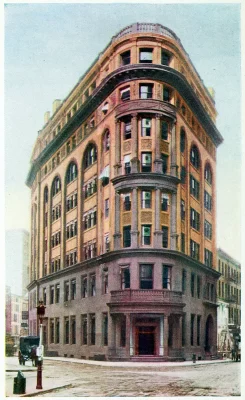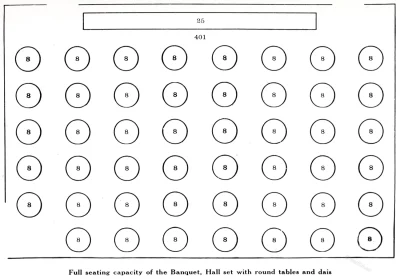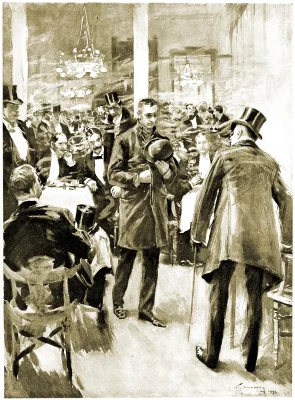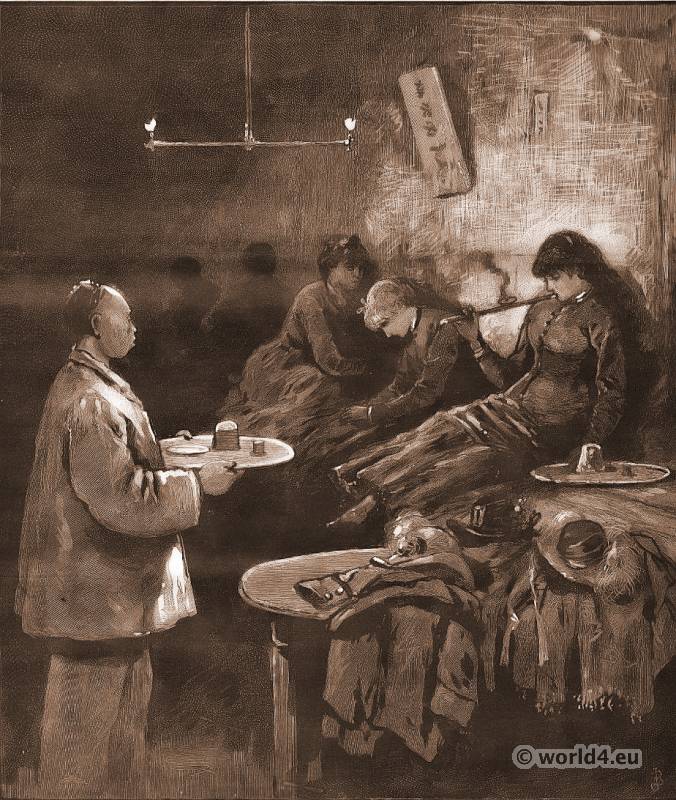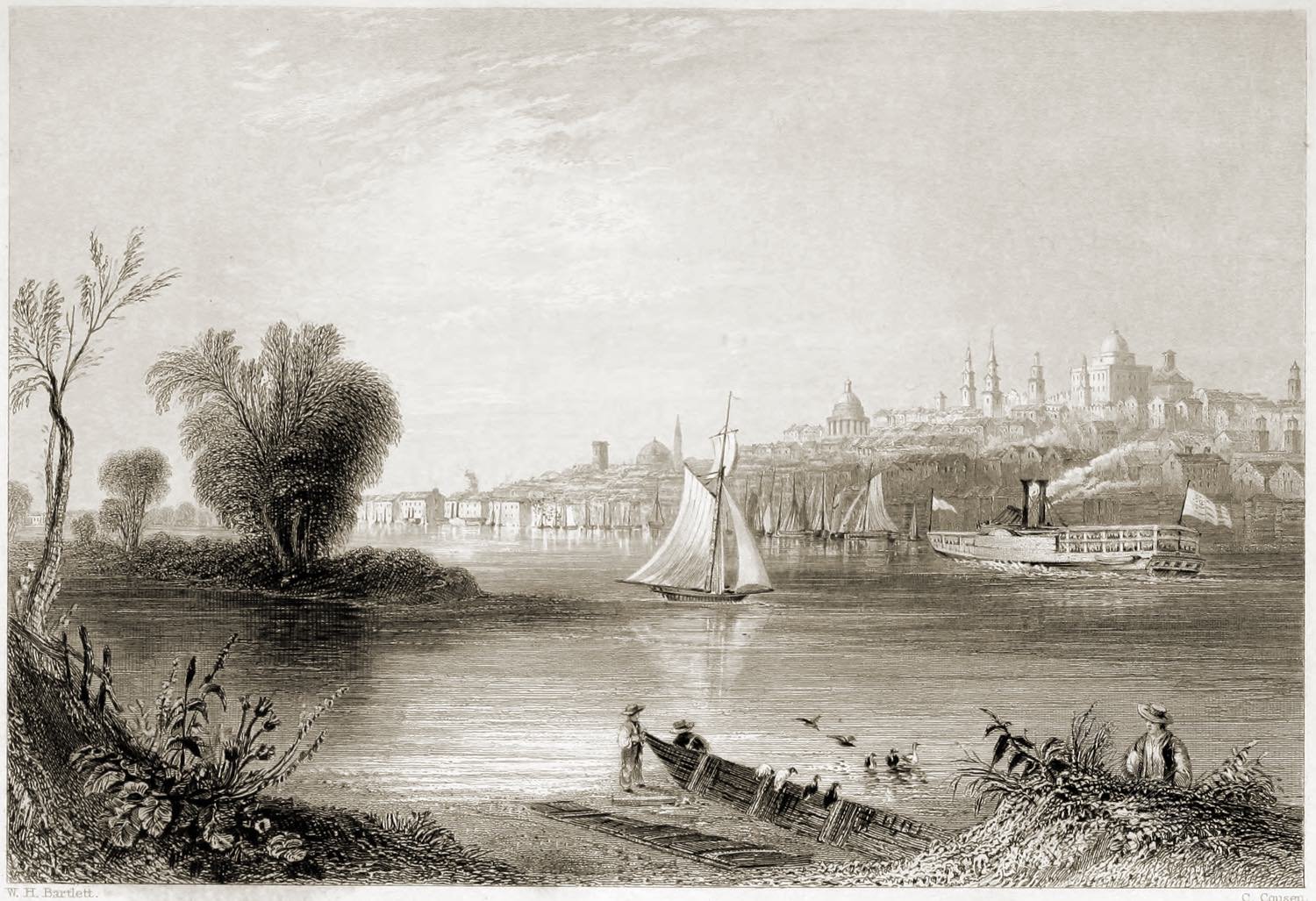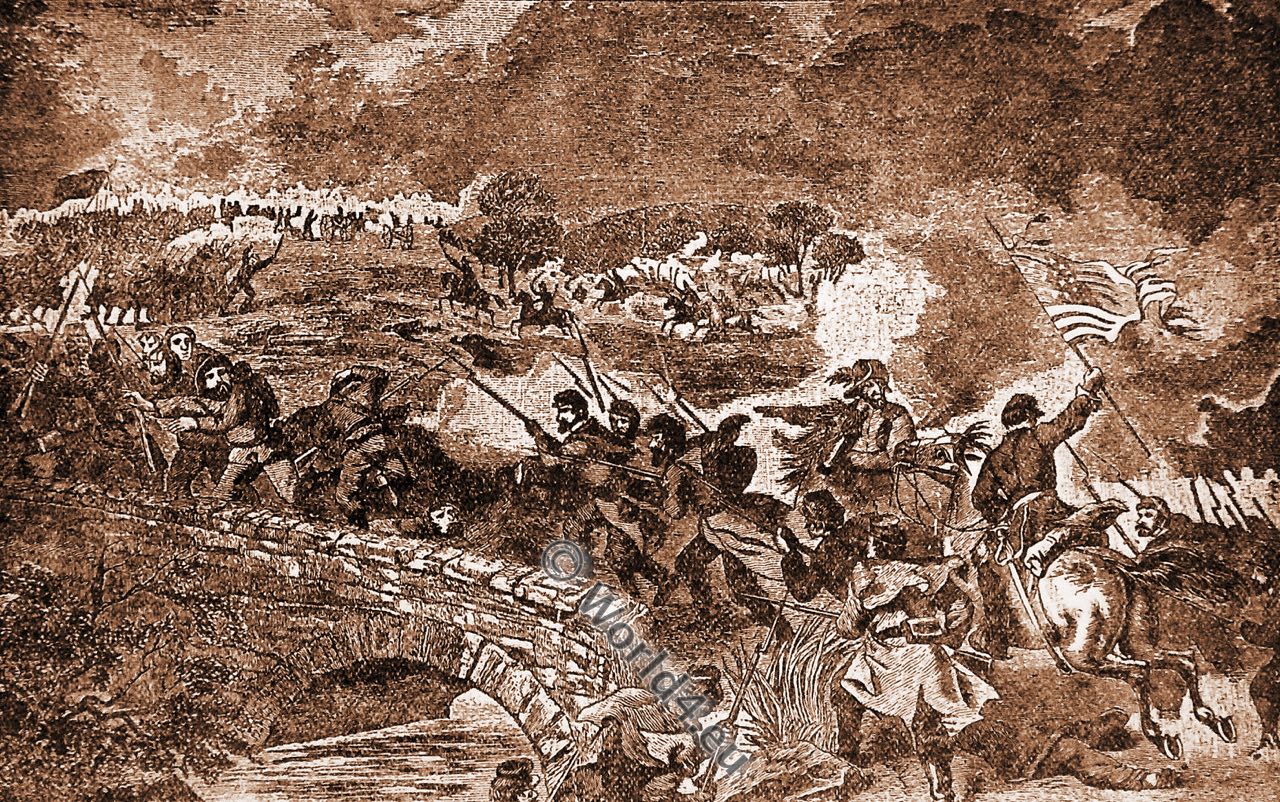Delmonico’s
FIFTH AVENUE
NEW YORK
FOR eighty years Delmonico’s has been the leading restaurant of America. Established by Peter and John Delmonico in 1827, it at once became the fashionable resort of the city and has never since retrograded from that position.
Delmonico’s first achieved its reputation because of the excellence of its cooking, the perfection of its vintages and the art which marked its services. All these component principles of dining are still preserved and wherever improvements are found expedient its patrons are the recipients of those benefits.
Its cellars are stocked with every wine that connoisseurs may demand, the rarest and oldest vintages being always at the command of patrons, and all are kept in such condition as is called for by their varying qualities. Nothing but the highest grade of all delicacies is used in this establishment—a rule that has obtained for three generations.
Delmonico’s has moved successively, as the residential portion of the city advanced northward on Manhattan Island, from its original house to Fourteenth Street in 1862, thence to Broadway and Twenty-sixth Street in 1875 and thence to its present location at Fifth Avenue and Forty-fourth Street in 1897. It has always been identified with the heart of the fashionable district and, should the future call for another establishment still farther uptown, there is every reason to believe that the call will receive the same response as have those of the past.
The house at Beaver and William Streets, in its comparatively modern building erected in 1895, is still in active operation and is daily thronged with the bankers, lawyers and merchants who transact their business in the great exchanges, banking houses and business offices in the neighbourhood of which it is the central point.
Both the Fifth Avenue house and that on Beaver Street are under the sole ownership of Miss Josephine C. Delmonico, while their management is in the hands of Mr. Eugene Garnier, for more than twenty-five years connected with the house and for more than fifteen its active manager.
The Fifth Avenue house was built about ten years ago at a cost of, approximately, one million dollars and stands today as the acme of perfection in restaurant architecture. Tasteful, yet simple, decorations in floral and artistic artisanship mark its every detail.
On the ground floor will be found the Cafe, extending along the easterly side of the building and facing on Forty-fourth Street; an exquisite apartment in the Old English style, particularly designed to rest and relieve the eye by the harmony of its decorations and the simplicity of its furnishings.
The Palm Garden, with its beautiful arched glass dome, its plate glass wall and its tall, slender palms which may be seen from the corridors, should be viewed at night to be best appreciated; for then, with the twinkling candles on every table and the fronds of the palms waving gracefully while scores of ladies and gentlemen dine, the scene is one to be ever remembered. This room, and the ladies and gentlemen’s dining room on the Fifth Avenue front, are finished in oak and pointed with gold, while the furnishings, in rich, red silks and velvets, lend an atmosphere of comfort and coolness in Summer and warmth and restfulness in Winter.
There are three ballrooms, the largest having a capacity, when used as a banquet room, of four hundred and twenty-five persons, seated. The upper floors are partially devoted to these ballrooms, to private dining rooms and banquet halls.
One of the most beautiful rooms in the building is the reception room on the third floor on the Fifth Avenue side. This room is 38 by 60 feet in dimensions and is finished in ivory and gold, with a musicians’ gallery at the north end.
Twelve private dining rooms for small parties are located on the upper floors, each having its own private reception room and each floor being equipped with its own service rooms, so that there is never the slightest conflict in any regard. These rooms accommodate from twelve to thirty persons with comfort, and all are furnished with care to their particular needs and size.
Delmonico’s has its own warehouse for the distribution of rare wines and, to assure both age and uniformity in the quality of its special brands, it may be mentioned that it buys its wines and liquors in large lots direct from the place or country of their production, storing and using them as occasion demands.
The two top floors are arranged in bachelor quarters, where a small number of suites are provided for the accommodation of those who are real lovers of a solitary life, and on the easterly end of the fifth and six floors is the Winter Garden, particularly designed for stag dinners and for the use of those who care for the enjoyment of a private cafe in connection with the dances and weddings, where smoking, because of the presence of many ladies, is not customary.
The force which moves this establishment consists of an army of cooks, butlers, maids, waiters and others whose business and pleasure it is to exert all their energies toward the comfort of the guests of the house. In the kitchen there are, besides the Chef, fifty cooks under the direction of specialist assistant chefs in each branch of the art of catering. The chefs, or assistants, who make any particular portion of the menu, such as soups, sauces or entrees, have nothing whatever else to do; likewise does this apply to game, to fish, to vegetables, to pastry and creams and all the other viands which make up the necessities of such an establishment.
Therefore, by such a system, a greater degree of perfection is attained and retained. Everything is systematised, and more than two hundred employees are at the instant command of the Manager, to carry out his orders; so that at no time is either a small dinner party or the largest banquet delayed or disjointed in any manner.
In conclusion, a word concerning the outside catering business of Delmonico’s may not be out of place. Although at times, during the busy season, as many as six hundred persons are served in the restaurant, Palm Garden and Cafe, and six or eight hundred in the banquet halls above, yet, on the same day, perhaps even at the same hour, other parties, unlimited as to number, are being served in town or in the country, sometimes many miles away. Delmonico’s has long made a specialty of these outside parties, and is ready at all times, fully equipped with men and material, to serve from the simplest collation to the most elaborate course dinner, furnishing every requisite, anywhere that can be reached by rail, regardless of distance or the number of guests.
This is but an outline of the character of the work of the house which has been for many years the leading restaurant of America. It makes its respects to its present patrons and begs to welcome the newcomer who wishes to taste the best that experience and knowledge can produce in the art of dining.
The Cafe at Old Delmonico’s
by A. V. S. ANTHONY
THIS cafe, which was the haunt of so many of the bons vivants, is now a dream of the past. It is a question if another such gathering-place will be found in our generation. Our picture is an illustration for one of Mr. Brander Matthews’s “Vignettes of Manhattan.” Bob White meets on the street, one cold autumn day, his old college chum Johnny Carroll, whom ill-fortune had apparently marked for its own, and, despite his seedy appearance, invites his friend to share a Thanksgiving dinner with him at Delmonico’s. ” Then take me to the cafe’,” said Carroll; “I can stand the men, I think, but I am not in shape to go into the restaurant, where the women are.”
For years this restaurant, situated on the corner of Twenty-sixth Street, Fifth Avenue, and Broadway, was one of the finest and most famous to be found in the world. Around its tables used to gather the well-to-do-men about town, and scattered among them one would find the brightest and wittiest in the land in every department of art and literature, as well as the other professions. The notable stranger within our gates was rarely permitted to depart without being the recipient of a dinner given here in his honour by his friends.
Source:
- Delmonico’s, Fifth Avenue, New York. Publisher: H.C. Lloyd, 1907.
- Life and character; by William Thomas Smedley (1858-1920). New York, London, Harper & brothers, 1899.
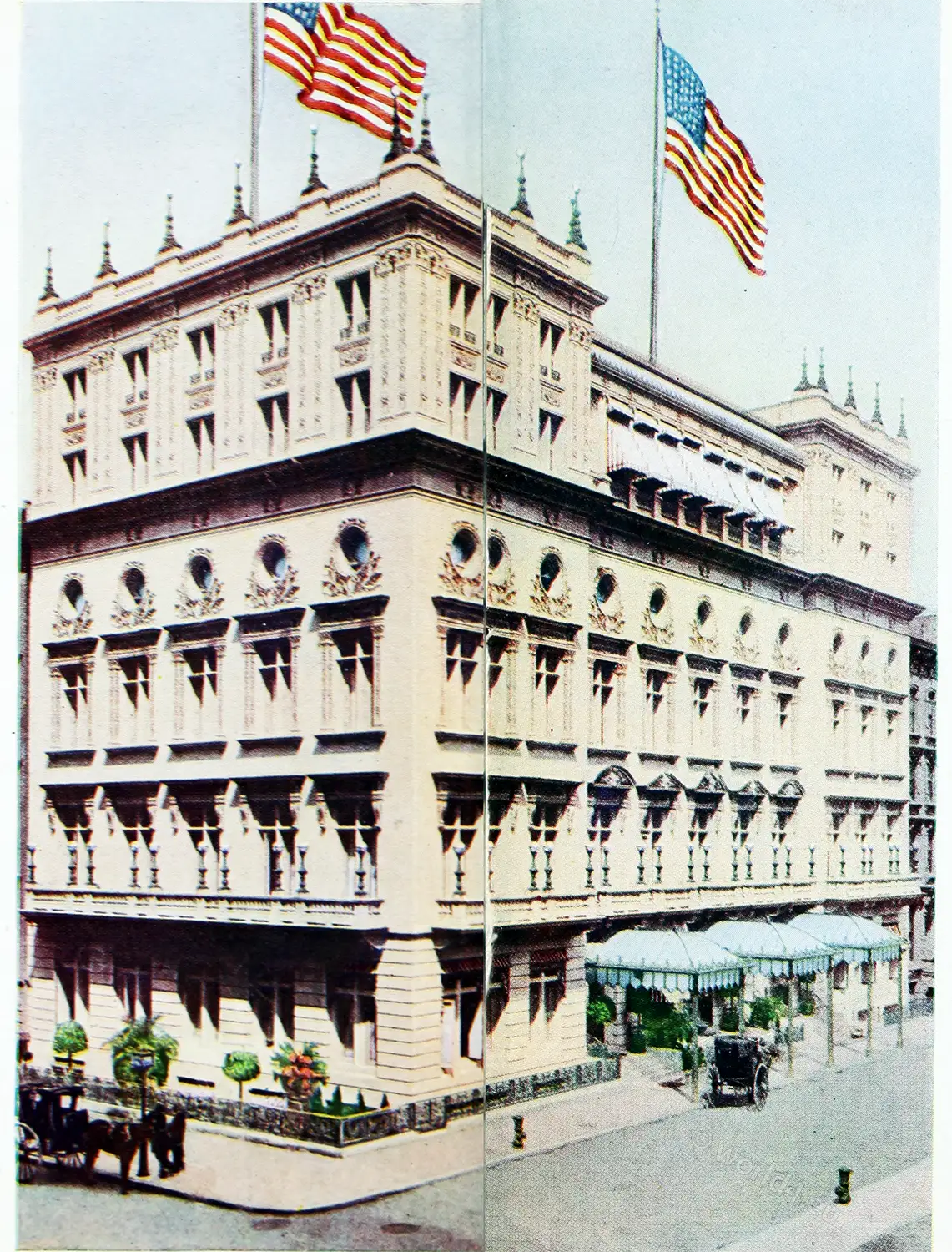


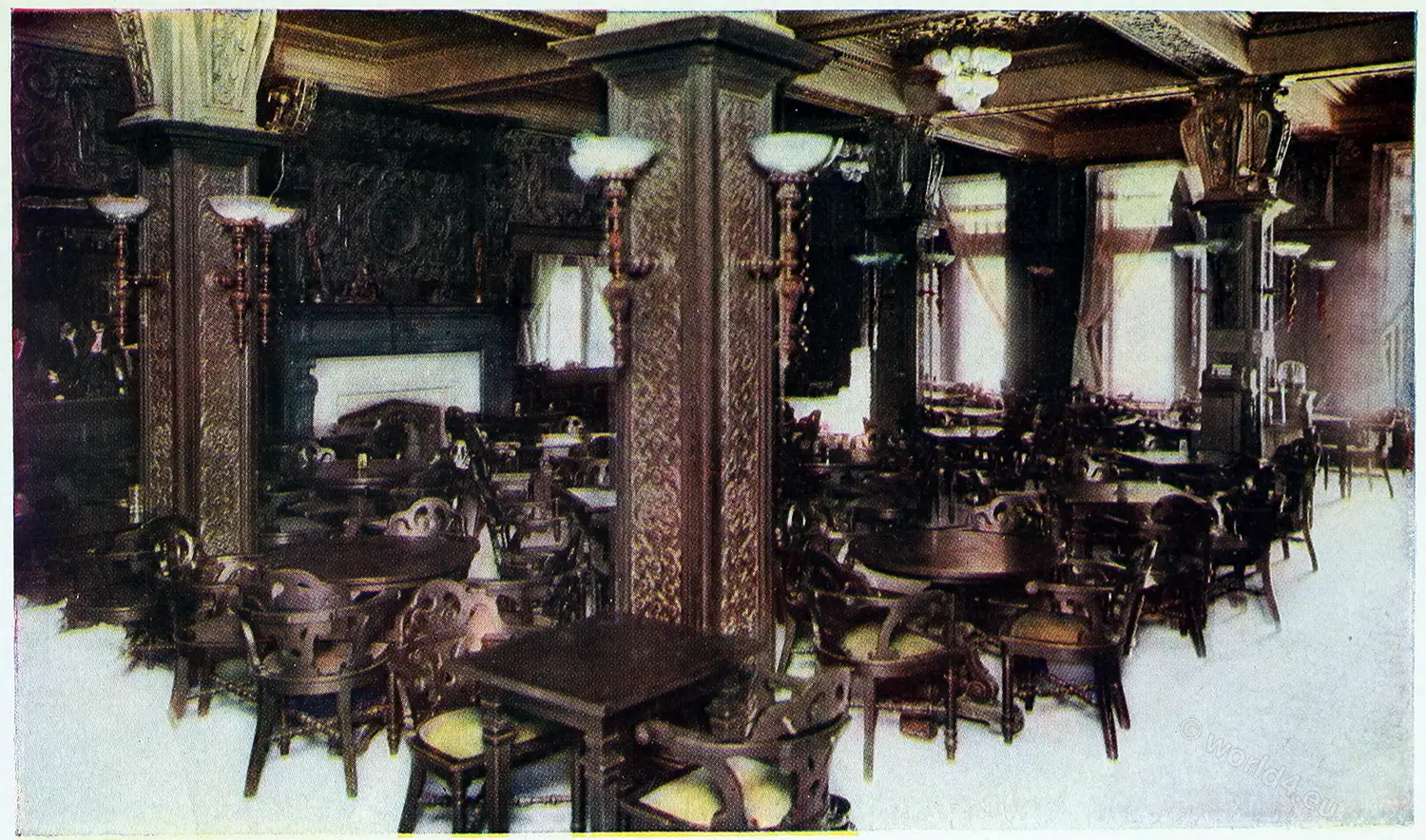


Delmonico’s Restaurant is one of the first restaurants in the United States to remain continuously open, and is also considered one of the first “fine” restaurants.
The first Delmonico’s was opened on December 13, 1827 at 23 William Street by Ticino brothers Giovanni “John” and Pietro “Peter” Delmonico who immigrated from Mairengo in Switzerland, and was originally a rented bakery or a pastry shop at 23 William Street. It was first considered a restaurant in 1830, and members of the restaurant staff were joined by Lorenzo Delmonico, John and Peter’s nephew, who is remembered for drawing up the restaurant’s menu and wine list. Unlike some bars and restaurants of the time, like Delmonico’s restaurant allowed ordering from a menu (à la carte, as opposed to table d’hôte), rather than offering set meals to customers. It was later one of the first restaurants in the United States to offer a separate wine list.
The Delmonico brothers changed locations several times before finally settling at 2 South William Street in August 1837. According to statements following the opening of the building, which had been destroyed a few years earlier by the Great Fire of New York, the two columns at the entrance to the structure would come from the ruins of Pompeii. That same year, John Lux took over as executive chef. Lux succeeded in making Delmonico’s an outstanding restaurant. In 1860, Delmonico’s provided catering for Edward VII’s Grand Ball at the Academy of Music on 14th Street.
In 1862 the restaurant hired Charles Ranhofer, considered one of the best chefs of his time. Four other eponymous restaurants were opened from 1865 to 1888, including the one on Fifth Avenue. In 1866, Alessandro Filippini of Ticino joined the Delmonico’s and remained there in various roles, including restaurant manager and chef, until 1891. Filippini was the first to systematically collect and publish the Delmonico’s recipes (The Delmonico Cook-Book, 1889). In the early 1850s the restaurant had among its guests the New England Society of New York, a society that hosted many of the best speakers of the time.
The restaurant was very successful from 1865 to 1888 and expanded its firm with other restaurants of the same name. In 1919, Edward L.C. Robins bought Delmonico’s restaurant. His large location, called “The Citadel,” at Fifth Avenue and 44th Street, closed in 1923.
In 1926, Oscar Tucci opened a new restaurant “Delmonico’s” at 56 Beaver Street and South William Street in New York City, where one of the Delmonico’s many eateries had once operated, and served the same old recipes. The Swiss family sued to prevent Tucci from starting the business, but since they had abandoned their rights to the name, their request was not granted.
The Delmonicos all closed in the first two decades of the twentieth century due to Prohibition.
During its operation, Delmonico’s hosted several celebrities. Among the many famous guests were Mark Twain, who celebrated his birthday at Delmonico’s, Charles Dickens, Oscar Wilde, Walter Scott, Nikola Tesla, Queen Victoria, Edward VII and Napoleon III. It was also the place where several dishes were allegedly invented, including chicken King, eggs Benedict, Manhattan clam chowder, Delmonico steak, and wedge salad. For some years it was associated with the most popular foods of the time, and its menus are used today as sources for historical research into the culinary tastes of the time.
Delmonico’s restaurant is considered one of the first restaurants in the United States.


